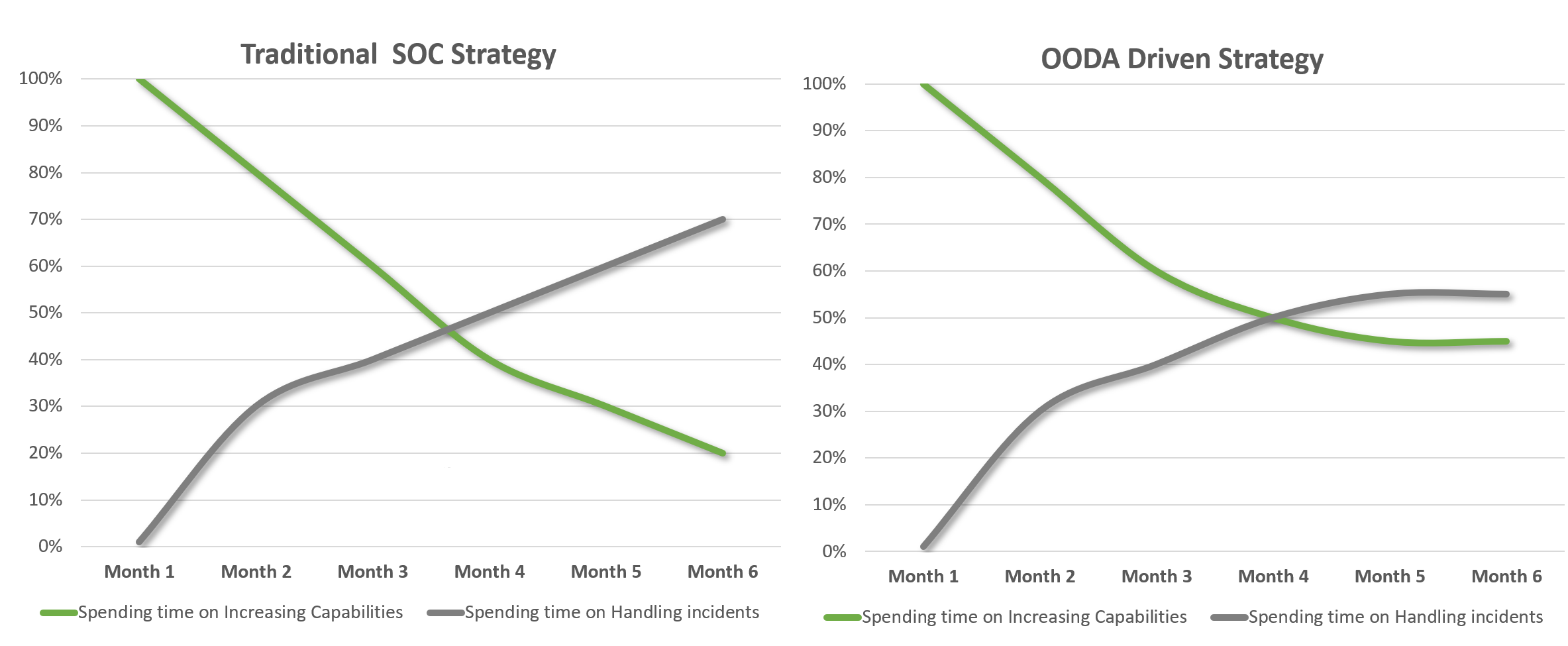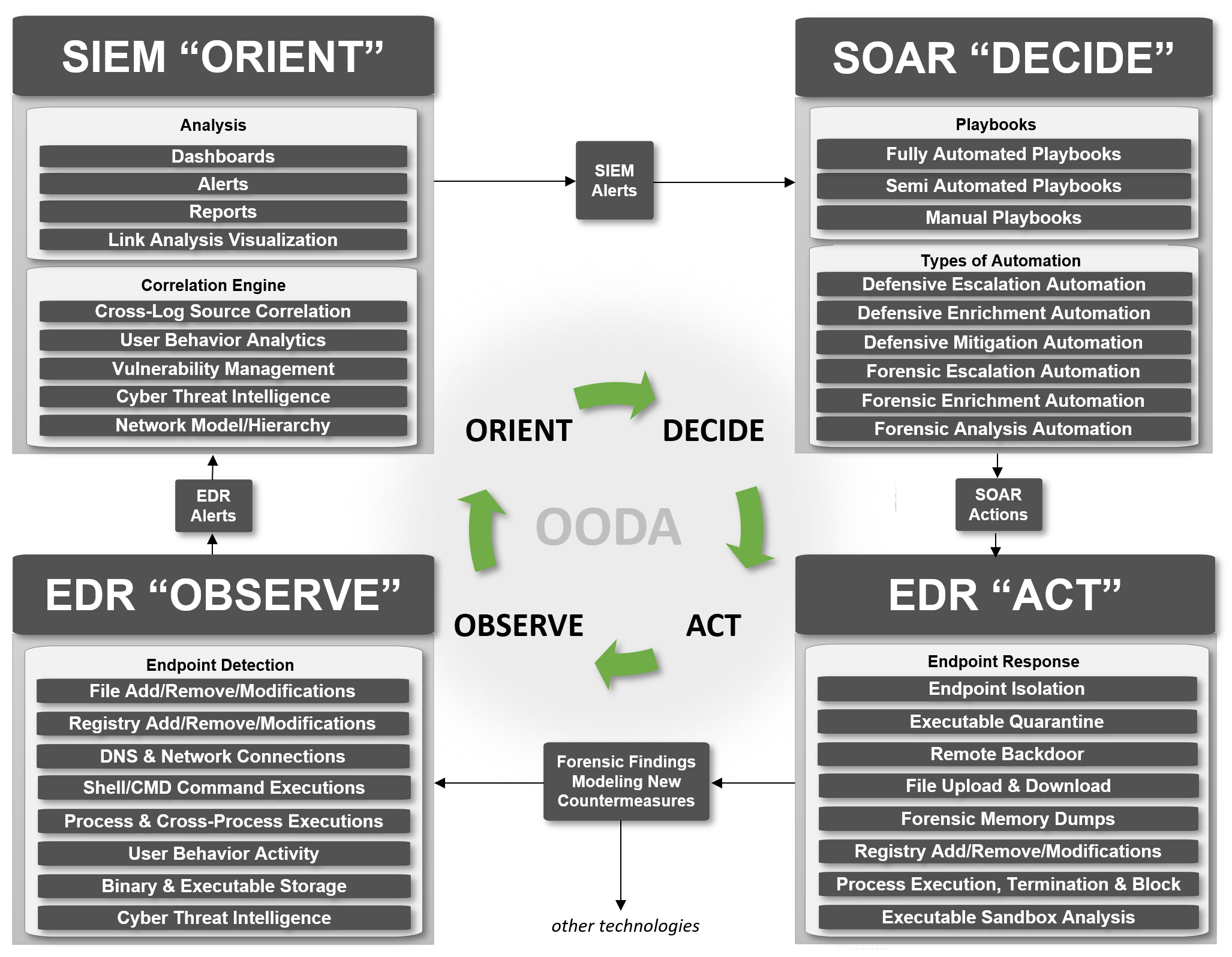The last few years within the Cyber Security Operations Center (SOC) Domain, several new technologies having been trending that enhance SOC capabilities. In particular I want to talk about EDR (Endpoint Detection & Response) in combination with SOAR and SIEM.
This technology (EDR) enables the organization to collect and correlate very intimate details of an endpoint within the organization's network. It also provides a response capability that provides instant mitigation and forensic functionality on the endpoint itself (gives the SOC "teeth" to bite into the incident).
EDR helps the SOC mitigate and investigate much quicker when it comes to cyber security incidents. Still one of the most important key KPI's measured within security operations centers is the time from detection to eradication of cyber security incidents.
Within some SOC builds there is still intense focus on the SIEM and making sure massive volumes of logs are on-boarded inside the tool. This in turn requires a relative amount of time spend followed by a series of use cases being badly configured which gives rise to the following time consuming issues:
A. Flood of alerts to Analyze
B. Extensive time spend on Manually Escalating to the right team
C. Time consuming and limiting capabilities for mitigating the potential threat on the endpoint directly*
Therefore I would like to propose an alternative OODA-Driven SOC Strategy to building or expanding SOC capabilities within an organization. Instead of focusing on the Traditional SOC Strategy with on-boarding log sources, focus on Integration and Quickly responding to cyber security incidents.
How does the OODA Loop apply to a SOC?
The OODA Loop is an agile iterative learning and operations cycle used in the military and the cyber security domain. More information about this model is on the wiki: https://en.wikipedia.org/wiki/OODA_loop . Below here you can see the OODA loop translated to general activities associated with building and running a SOC.

Traditional SOC Strategy vs. OODA-Driven SOC Strategy
What is the difference between Traditional SOC Strategy vs. OODA-Driven SOC Strategy?
| Traditional SOC Strategy | OODA-Driven SOC Strategy | |
| Technology Focus | SIEM | SIEM, SOAR and EDR |
| People Focus | SIEM Admin, SOC Analyst, Incident Responder | SIEM Admin, SOAR Admin, EDR Admin |
| Process Focus | L1, L2 Alert Analysis | Overall OODA Loop |
| Metric Focus | Amount of log sources onboarded | Amount of (partially) automated OODA Loops |
| Governance Focus | Log source onboarding | OODA Automation & Integration |
| Use Case Focus | Rules, manual analysis & response | Rules, Playbooks & Automation Integrations |
Key Critical Notes
This proposed OODA-driven SOC strategy comes with some critical notes that should be taken into account before deciding on this strategy.
Time spend estimates compared
These two pie charts attempt to illustrate the 100% time spend by a SOC team in it's build and run activities. The OODA-Driven approach proposes spreading time allocated out evenly over the full cycle, while traditional approaches might stick with an over focus on Observe and Orient.

| Traditional SOC Strategy | OODA-Driven SOC Strategy | |
| OBSERVE | 50% of time focused on Log source onboarding | 25% time spend on log source onboarding (12,5% endpoint and 12,5% on network) |
| ORIENT | 30% of time spend alert analysis | 25%: 5% time spend on alert analysis, 20% spend on additional rules |
| DECIDE | 10% of time spend on deciding for a response | 25%: 5% time spend on deciding, 20% spend on new playbooks |
| ACT | 10% of time spend on manual mitigation | 25%: 5% time spend on mitigation, 20% spend on integration |
Time spend over 6 Month period time
The following diagram tries to illustrate that with a "log source onboarding focus" you end up spending a lot of time manually handling incidents through analysis and response. While focusing on "OODA Automation" will provide more free time to increase capabilities overtime.

How do EDR, SOAR and SIEM fit in?
The following diagram attempts to illustrate the integration between, SIEM, SOAR and EDR following the OODA-Driven SOC strategy.
Conclusion
The main point I have tried to make in this article is that: investing less in SIEM and more in EDR and SOAR (a balanced approach across all three) will provide more room for reducing the overall time of the: "Detection till eradication" KPI through the means of automating the OODA Loop with SOAR and EDR tooling.
